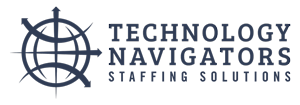Walking distance from the pink dome of the Texas Capitol building, there were whiskey samples, tamales and Nerf guns.
The Virtual Reality crowd talked Augmented Reality. The millennials in YETI shirts and the gray-haired post-hippies in psychedelic vests racked up points in a 3-D shootout on Space Pirate Trainer. And then there was Tim Porter, the guy with the hologram-creating Merge Cube. Using an app he developed, Mr. Porter pulled out his phone and put his 4-year-old daughter’s stuffed penguin into the cube, virtually speaking.
Austinites have a name for all this: a Tuesday night.
It was just another event at the Capital Factory, Austin’s techie community center and start-up hub — this time, a virtual reality holiday party. Located in an office and hotel complex downtown, the Capital Factory has helped a number of Austinites quit their day jobs to become tech entrepreneurs. The shared work space features a Star Wars-themed floor with Luke and Leia restrooms, local craft beer on tap and a conference room hidden, Hardy Boys-style, behind a bookcase that swings open when you press the right book (“The Plains of Passage”).
“It doesn’t matter what you want to do, there are five Meetups at night that will support it,” said Mr. Porter, 34, the founder and chief technology officer at Underminer Studios. “It’s a maker community.”
For decades, Austin was defined by the bureaucracy of state government, the academia of the University of Texas and the funkiness of its hippie-cowboy, Willie Nelson-inspired music and arts scene. Today, the tech culture and economy have transformed Texas’ capital city and surrounding suburbs, creating jobs, worsening traffic, raising prices and changing the region’s politics, tempo and brand.
None of this is entirely new — people have been calling the Austin area’s tech scene “Silicon Hills” since the late 1980s and early 1990s. But the slogan and the hype have now dramatically caught up.
Apple’s recent announcement that it will build a new $1 billion campus in the Austin area that could eventually employ up to 15,000 people — expanding its current 6,000-worker presence and making it the largest private employer in the region — has given the city’s rapidly expanding tech community a morale boost, a moment in the national spotlight, and also a point of debate.
Apple’s planned expansion has raised a host of unanswered questions about traffic, gentrification, affordability and competition for jobs.
Austin consistently ranks high on the lists of cities with the worst traffic in America. And a recent housing market analysis found a shortage of 48,000 rental units affordable to households earning less than $25,000 per year. Supplies for middle-income families are also increasingly strained.
“I think in the last 10 years, it’s been a real struggle for Austin to keep its identity and keep its soul, as downtown is being razed and converted into condos and high-rises, and you have people like Google and Facebook and Apple taking over the town with these buildings,” said Omar Gallaga, who covered the city’s tech culture for The Austin American-Statesman for more than 20 years. “If you have all the artists and the creative people that make it interesting move away because they can’t afford to live there, then it becomes a different place.”
Few dispute that tech has turned Austin into one of the most vibrant and distinctive capital cities in America. Its other varied cultures — music, military, higher-ed, food, politics, journalism, real estate — are inseparable from its tech culture.
Joseph Kopser, an Austinite who founded and sold a start-up called RideScout, made an unsuccessful but attention-grabbing run this year for a seat in Congress. A longtime venture capitalist, John Thornton, was the founder of The Texas Tribune, a nonprofit, Austin-based digital news organization that has helped transform Texas journalism. The nonprofit Austin Tech Alliance has launched get-out-the-vote efforts and helped city government shift to paperless permitting. One of the city’s biggest annual cultural attractions, the South By Southwest festival, is now as much a celebration of tech as it is music and film.
On any given day, some of the state’s far-right lawmakers may be rubbing elbows downtown with 20-something entrepreneurs headed to work on motorized scooters — or perhaps, not long ago, passing by Professor Dumpster, otherwise known as Jeff Wilson, the co-founder of the start-up Kasita, who lived in a 33-square-foot dumpster for a year as part of an experiment in minimalist living.
Austin is still weird. It’s just more wired now, too.
“We don’t want to become Silicon Valley — we want to be Austin,” said Joshua Baer, the founder and chief executive of the Capital Factory, launched in 2009 to mentor, finance and support start-ups and entrepreneurs. “What makes Austin really different, to me, is the culture clash. But it’s not a clash. It’s the culture collaboration.”
There are now more than 138,000 tech-related jobs in the Austin metropolitan region, about 14 percent of the total jobs in the area. Ray Perryman, an economist in Waco, estimated that the tech sector pumps about $31 billion into the area’s overall economy, about 35 percent of the total. It is far from the biggest tech community in the country. In a ranking of the top tech-talent markets by CBRE, a commercial real estate company, Austin came up sixth, behind San Francisco, Seattle, Washington, Toronto and New York. But Austin’s brand as a tech hub rivals that of some of its rivals, including other cities that have a larger tech presence.
“We punch way above our weight class,” said Barbary Brunner, the former chief executive of the Austin Technology Council, which was founded in the early 1990s and functions as the tech community’s chamber of commerce. “If you’re from outside Austin, you think the tech industry here is huge, super sophisticated, super mature. We don’t have the innovation leaders here. We have executors here.”
The buzz lately does not revolve solely around Apple. A different older global behemoth rarely embraced by hipster tech has become a major player — the United States Army. Months before Apple’s announcement, the Army opened a new center in downtown Austin to help modernize its weapons and equipment and to identify, acquire and develop innovative technology.
The Army Futures Command is the only so-called four-star command that is based not on a military installation but in a civilian building, in this case in the heart of the city in a satellite of the University of Texas. The soldiers mostly shun camouflage for button-down shirts and khakis. They have embedded in Austin’s tech culture, military officials say, to help make the Army smarter and more cutting-edge. The leader of the Army Futures Command, Gen. John M. Murray, a four-star general who also wears casual business attire to work, has been meeting tech entrepreneurs, hanging out at the Capital Factory and recently attended his first Austin hackathon.
“One of the things that we are working on — and we have not solidified yet, this is just still a concept — is can the Army work with venture capitalists?” General Murray said, adding, “I’ve probably had, in the last couple months, a dozen or a dozen and a half conversations with VCs. For me, it’s more about understanding, because this is all new to me. So, understanding the world they live in, what their requirements are, how they can help us and how we can help them.”
One of the first outcomes of the Army’s new venture was a mixed success. General Murray wanted the Army to work with an Austin-based start-up, Senseye, to help reduce the amount of time a pilot spends in training. It did not work out as planned, but the Army found another application for the company’s technology.
The Futures Command will be fully operational in the summer of 2019, and a staff of about 500 will take over two floors of the UT System building. Until then, a subset of the Futures Command called the Army Applications Lab has a team that works out of the Capital Factory.
The day after the VR holiday party, Mr. Baer and the rest of Capital Factory hosted a visit from one of the Army’s top officials, Ryan D. McCarthy, the Army under secretary. Mr. McCarthy told reporters that he felt “pretty good” about Apple’s planned expansion, and the Army’s expanding role in Austin. “I think it just shows the wealth of talent and opportunity that exists here in this city and this state.”
View the original article by The New York Times (Manny Fernandez/ David Montgomery) here.

